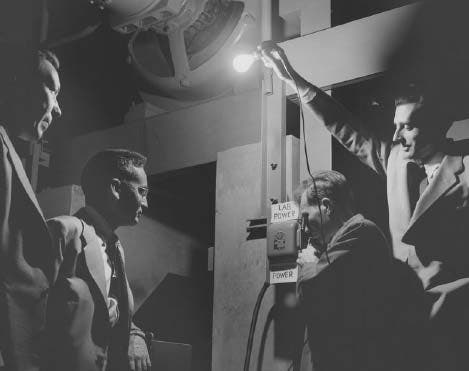Further Investigations
1906-1932
Physicists and other scientists delve into the complexities of the atom, determined to understand its structure and to gain the ability to break it apart.
June 1908
Ernest Rutherford, recently appointed chair of physics at the University of Manchester, and his student, German physicist Hans Geiger, published a description of a new device to detect radioactivity in the Proceedings of the Royal Society. Geiger continued to make improvements on the device and in 1928, with the help of his student Walther Müller, developed the Geiger-Müller counter still used today.
May 1911
Ernest Rutherford published his discovery of the nucleus of the atom in Philosophical Magazine. While researching the scattering of alpha particles, he discovered a central charge within the atom that he later named the nucleus.
July 1913
Danish physicist Niels Bohr published his first model of an atom in Philosophical Magazine. The model positioned what would later be called neutrons and protons in a central nucleus with orbiting electrons similar to planets orbiting the sun.
October 1930
Ernest O. Lawrence and Niels E. Edlefsen published a description of the first cyclotron in a brief article in Science. The cyclotron accelerated nuclear particles to very high velocities without the use of high voltages. The first cyclotron was a pie-shaped device of glass, sealing wax and bronze.
February 1932
James Chadwick announced his discovery of the neutron in a brief article in Nature and a subsequent complete paper in the Proceedings of the Royal Society. Chadwick found that neutrons lacked an electrical charge and that they would be able to penetrate matter.

